- Home
- slideshows
- miscellaneous
- We drove a $39,000 Toyota RAV4 and a $32,000 Subaru Forester to see which one is the better compact SUV. Here's the verdict.
We drove a $39,000 Toyota RAV4 and a $32,000 Subaru Forester to see which one is the better compact SUV. Here's the verdict.
First up is the Subaru Forester.

The new fifth generation Forester debuted for the 2019 model. It's all-new and built on the Subaru Global Platform that also underpins the Crosstrek and the Impreza.
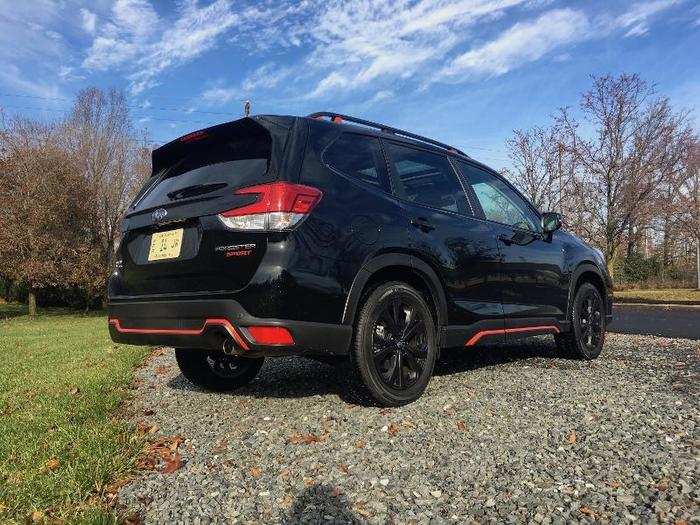
Aesthetically though, you'd be hard-pressed to spot the difference between the new model and its outgoing predecessor. In other words, it's undeniably a Subaru. Overall, the styling is restrained and handsome.

At 182.1 inches long with a 105.1-inch wheelbase, the 2019 Forester is about an inch longer than the outgoing model. This translates into a slightly more roomy interior. The Forester also delivers a stout 8.7 inches of ground clearance.
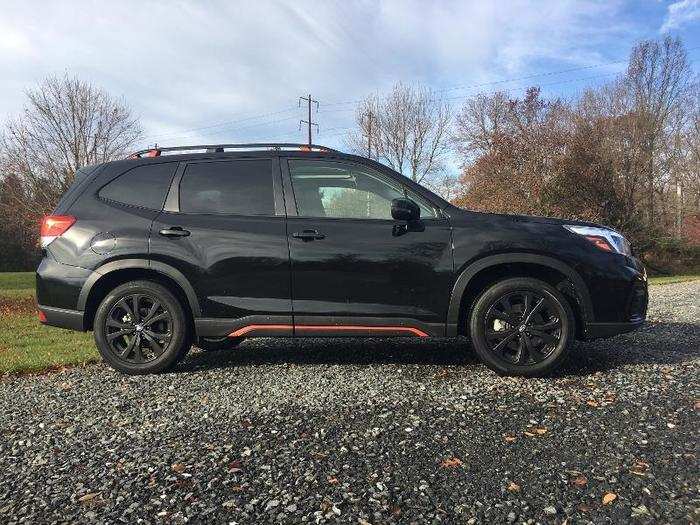
Speaking of the interior, it's rather impressive. While the Forester Sport's cabin isn't exactly stylish or plush, it's very roomy and well-designed. Cabin ergonomics and button placement are on point.
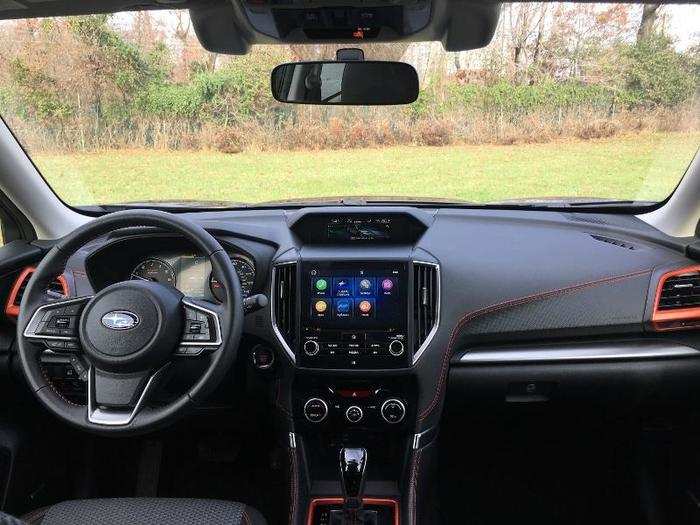
The cabin feels solidly put together and its material quality is impressively high. Everything about this interior gives you the impression that it's built to last.
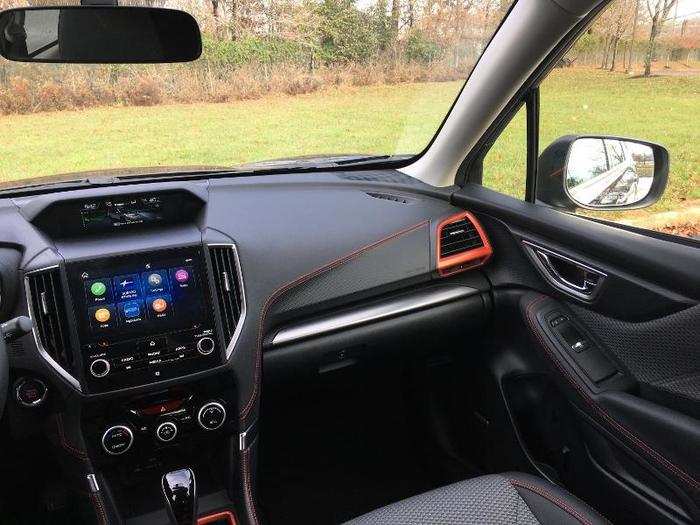
I'm not in love with the Sport trim's orange accents. They feel a bit tacky.
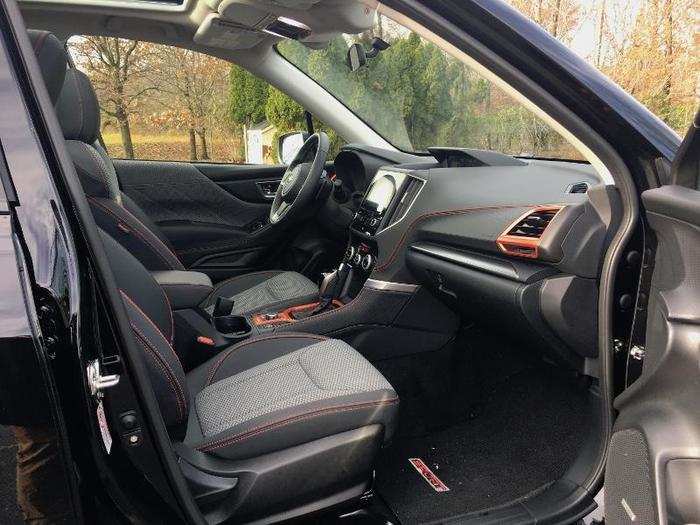
The Forester interior in Touring trim is considerably plusher.
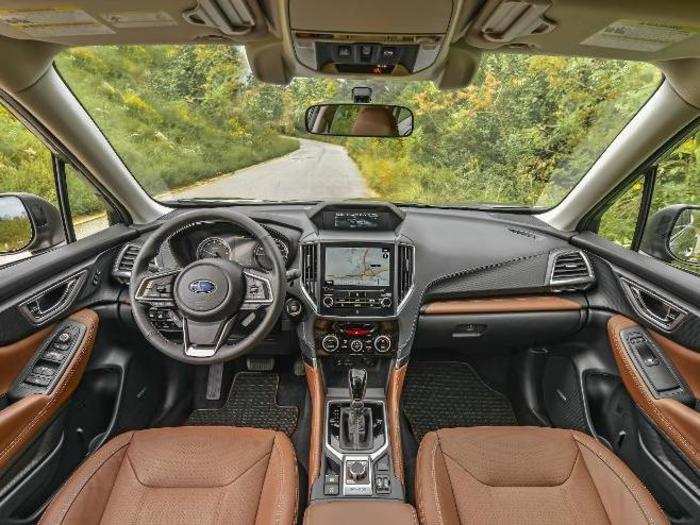
In front of the driver is a leather-wrapped steering wheel. It's packed with the various buttons needed to operate everything from the drive mode selector to the adaptive cruise control. Fortunately, the buttons are clearly labeled and the controls are intuitive to use. There's also a digital information display flanked by a traditional analog gauge cluster.
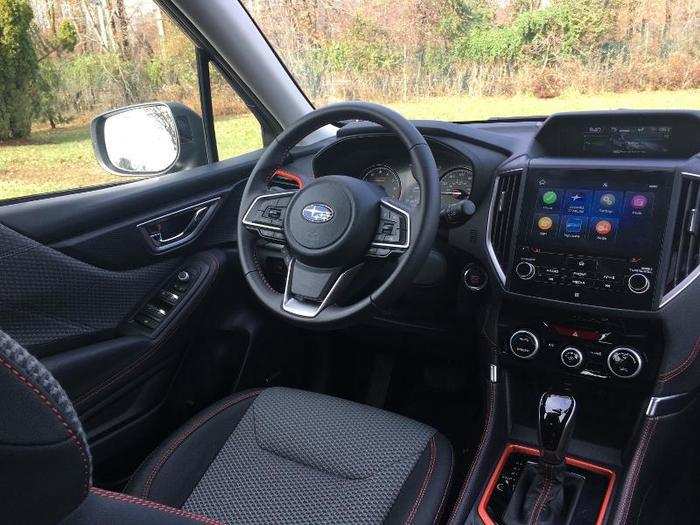
The Forester's center console features not one, but two infotainment screens. It's the same setup found in both the Crosstek and the Ascent.
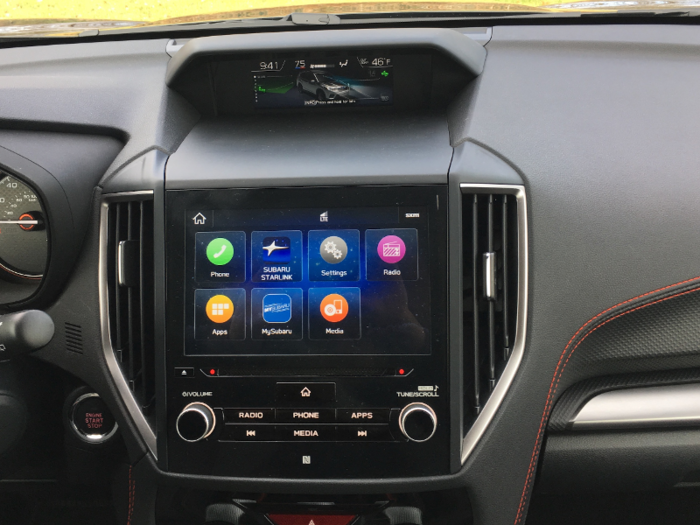
Our test car came equipped with the optional eight-inch touchscreen running Subaru's Starlink infotainment system. Foresters come equipped with a 6.5-inch unit.
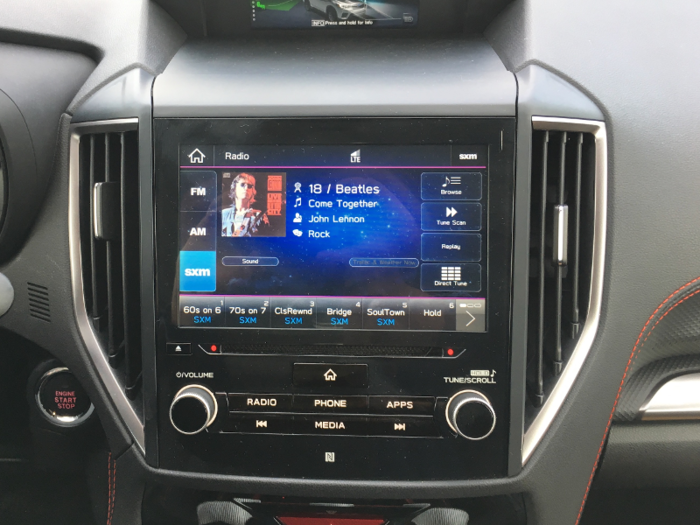
We were impressed with Starlink's simple, straightforward layout as well as its many features.
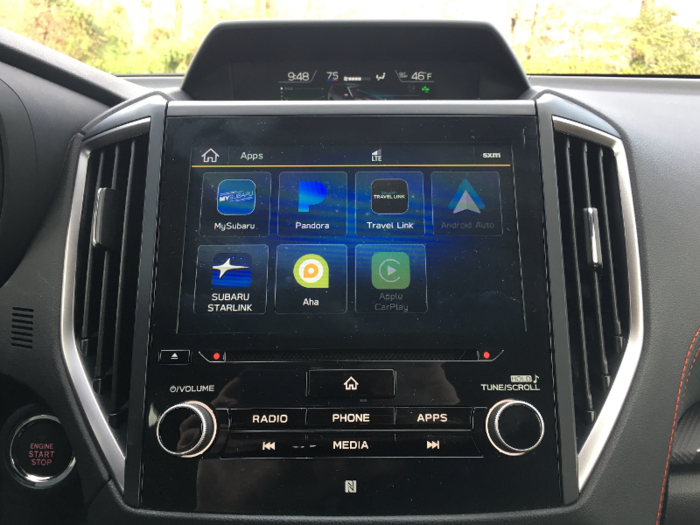
Features include Apple CarPlay, Android Auto, and Pandora App integration.
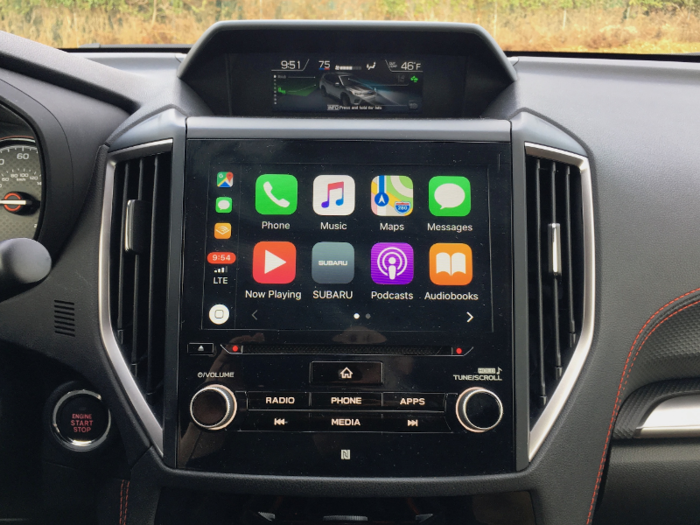
The secondary display, which is controlled using the "Info" button on the steering wheel, is just as useful. It offers readouts of the vehicles trip computer, climate control ...
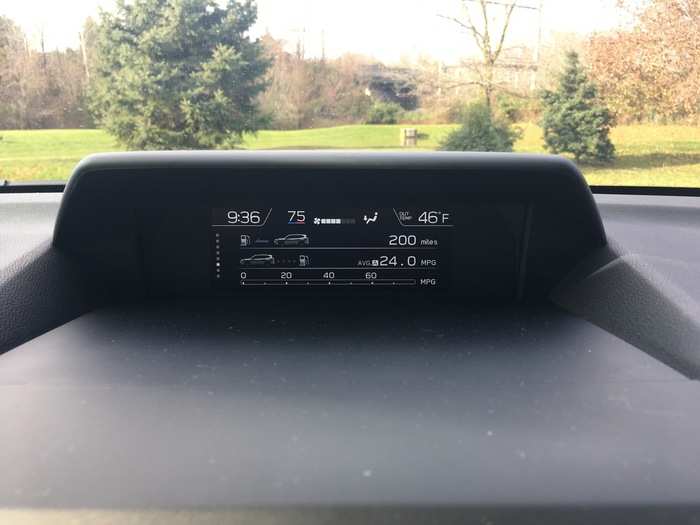
... Radio ...
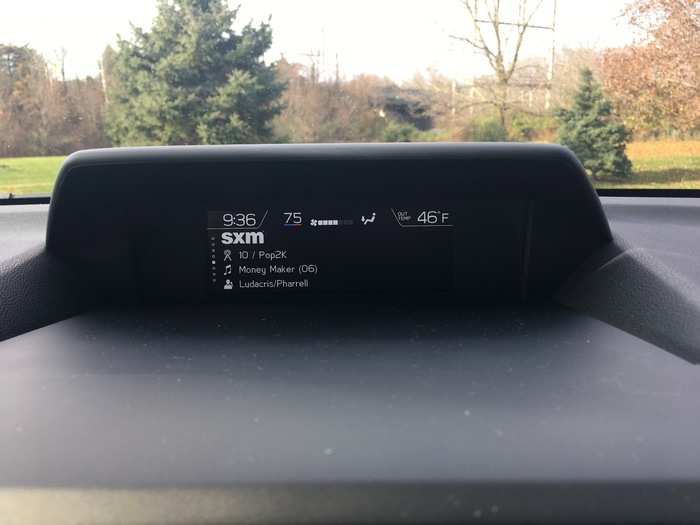
... As well as any active safety systems.
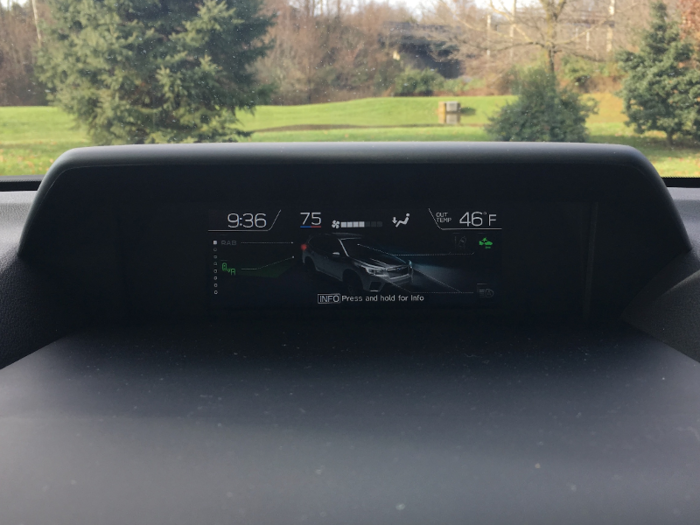
Subaru's EyeSight drivers assistance system comes standard on all Foresters. Eyesight is made up of a collection of technology including adaptive cruise control, automatic pre-collision braking, lane-departure warning, lane-keep assist, and pre-collision throttle management. The system, which works through a pair of cameras located on either side of the rear-view mirror, worked brilliantly and is a true asset to Subaru.
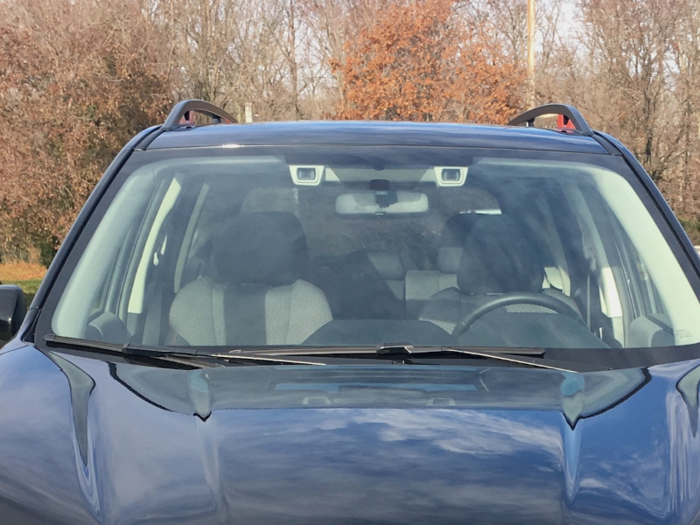
The second row is particularly impressive with ample head and legroom for even the taller among us. The rear seats now have 39.4 inches of legroom, up 1.4 inches from the outgoing model. On paper, the Forester has 0.2 inches less legroom than the Mazda, but it feels much roomier.
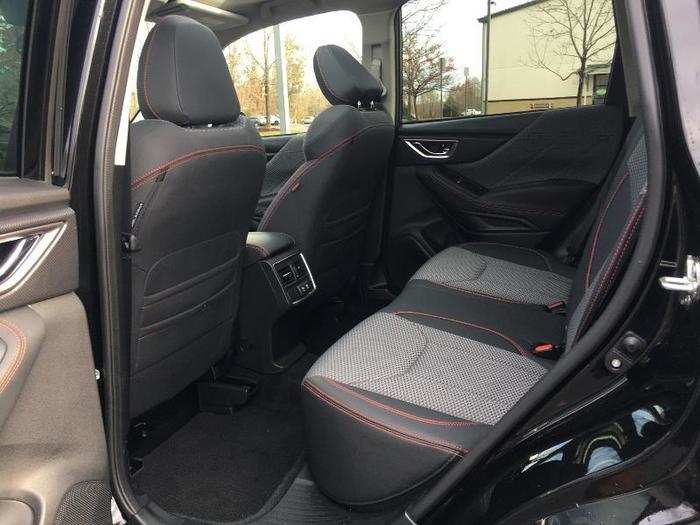
Overall, the Subie's cabin feels roomy, airy, and inviting. It's helped by the panoramic sunroof that comes standard on all Foresters except the base model.

Open the power rear hatch and...
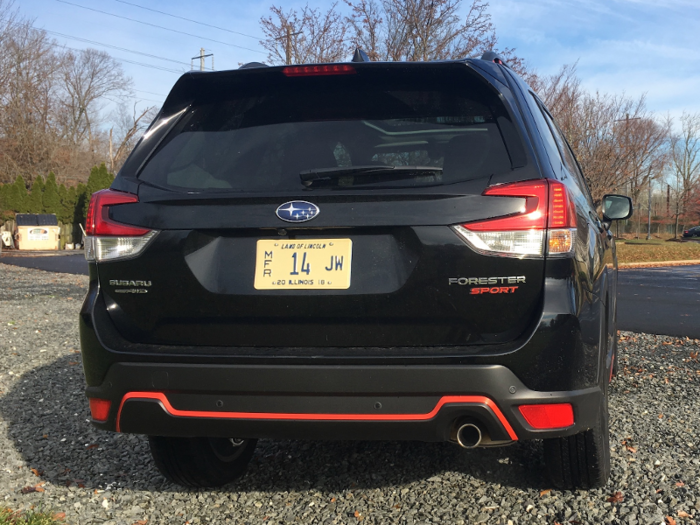
... You'll find 33 cubic feet of cargo space with the seats up. Fold the second row down and cargo capacity increases to a voluminous 70.9 cubic feet.
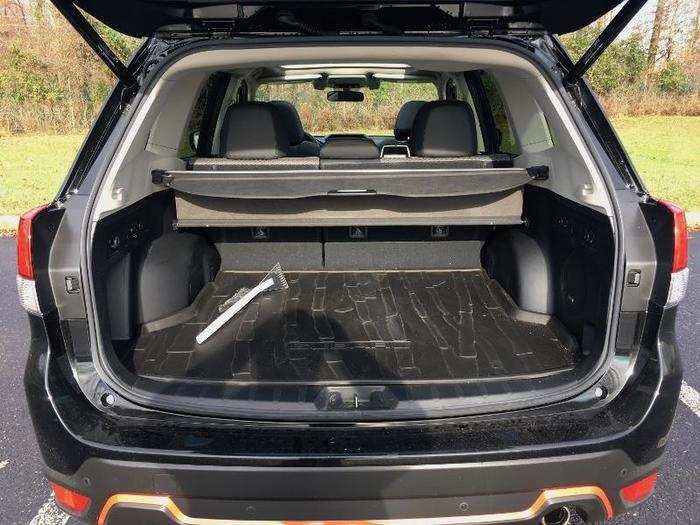
Power for the new Forester comes from an updated version of Subaru's trusty 2.5-liter, boxer-four-cylinder engine. The naturally aspirated powerplant produces 182 horsepower, up 12 horsepower from the outgoing model. It's hooked up to a continuously variable transmission ...
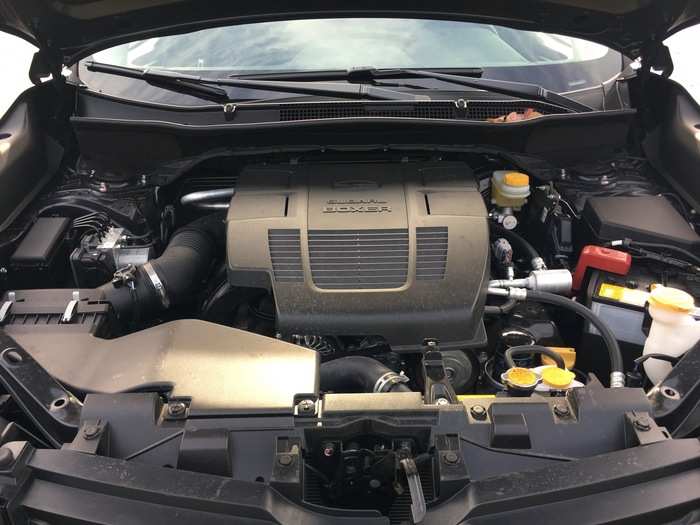
... That sends power to Subaru's standard Symmetrical All-Wheel-Drive system. The Forester's AWD system can operate in several modes including dirt, snow, and mud.
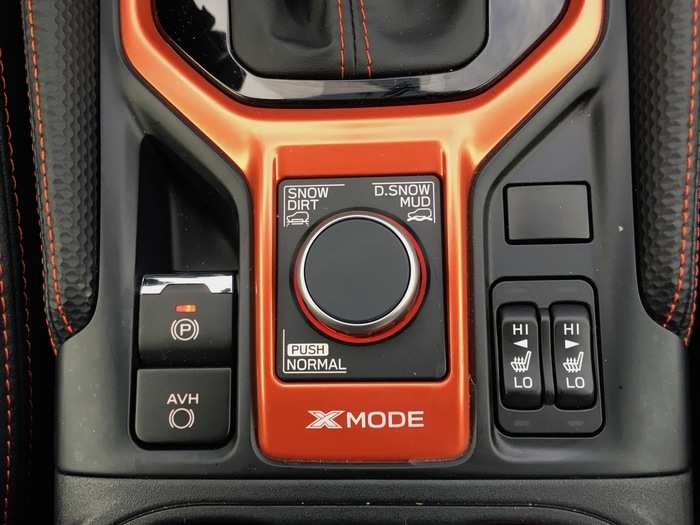
So, what's it like to drive?
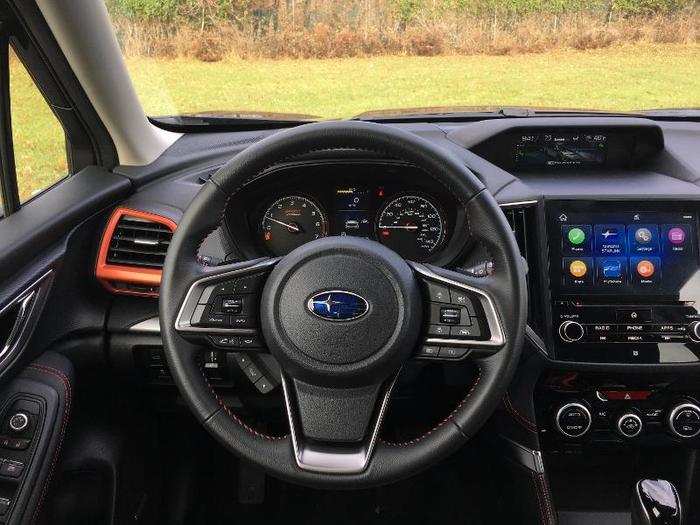
The Forester is slow and a bit underpowered, but quite pleasant in every other regard.
The issue centers on the fact that the naturally aspirated four-cylinder engine simply doesn't have enough power to haul around the 3,400-pound SUV, its passengers, and all of their stuff.
"The Forester struggled mightily on highway on-ramps. The CVT worked hard to keep the engine in the meatiest part of its powerband, but it could only do so much," we said in our review. "We did eventually find some speed, but it took a while. The powertrain just didn't feel eager to perform, even in Sport mode."
Apart from the lack of power, the Forester performed very well. Its handling was quick and nimble, but a tad on the numb side. The suspension delivered a smooth and comfortable ride.
Next up is the Toyota RAV4.
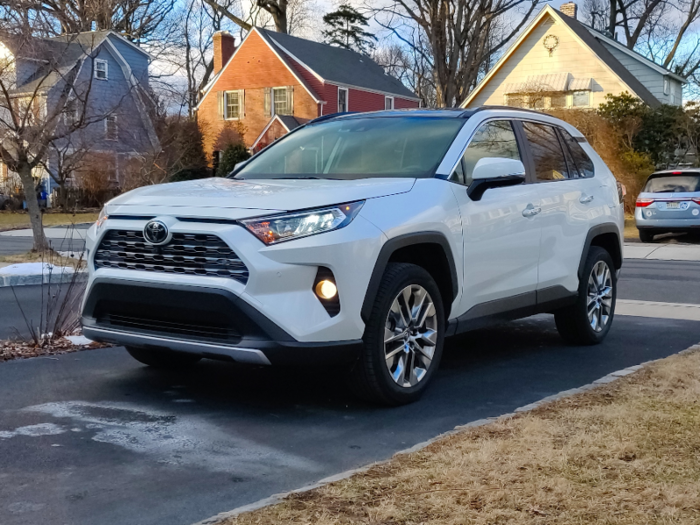
The base 2019 Toyota RAV4 LE starts at $25,500, while the mid-grade XLE, XLE Premium, and Adventure models start at $27,300, $29,500, and $32,900. The top-grade Limited trim starts at $33,500.
Hybrid variants of the RAV4 start at $27,700 for the LE and run all the way up to the Limited trim, starting at $35,700.
All-wheel drive is available as a $1,400 option on all trims except the Adventure and Hybrid variants, in which it comes standard.
With options and fees, our 2019 Toyota RAV4 Limited carried an as-tested price of $38,565.
For 2019, Toyota is back with an all-new, fifth-generation RAV4.
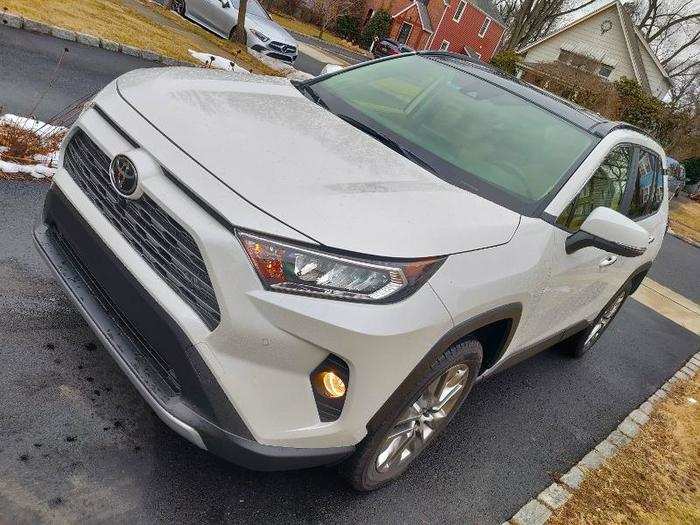
The new RAV4 is built on Toyota's new TNGA-K global midsize platform shared with the Camry sedan. Previous RAV4s were built on compact platforms shared with the Corolla and the Prius.
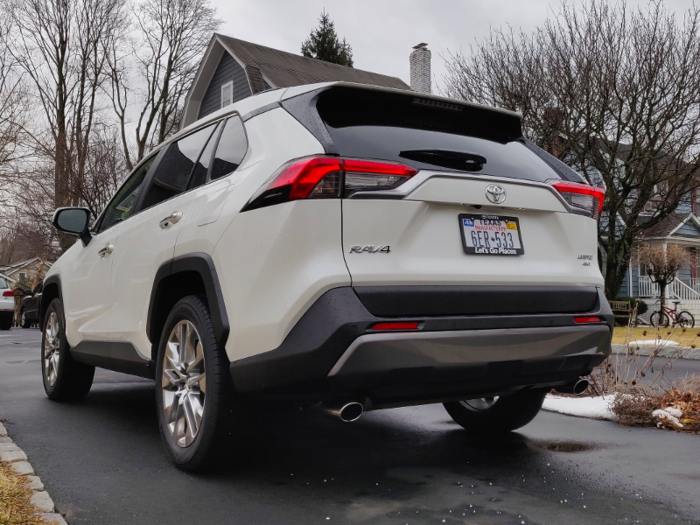
Its wheelbase is now 1.2 inches longer — but apart from that, the RAV4's overall dimensions remain virtually unchanged. Its ground clearance has also increased by roughly 2 inches, to as much as 8.6 inches.
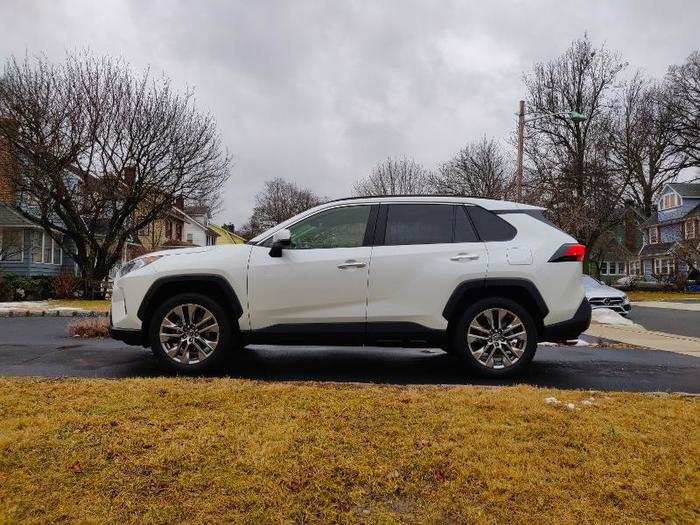
The RAV4 sheet metal is handsome and modern, delivering suburban civility with a subtle evocation of 4Runner/Land Cruiser ruggedness.
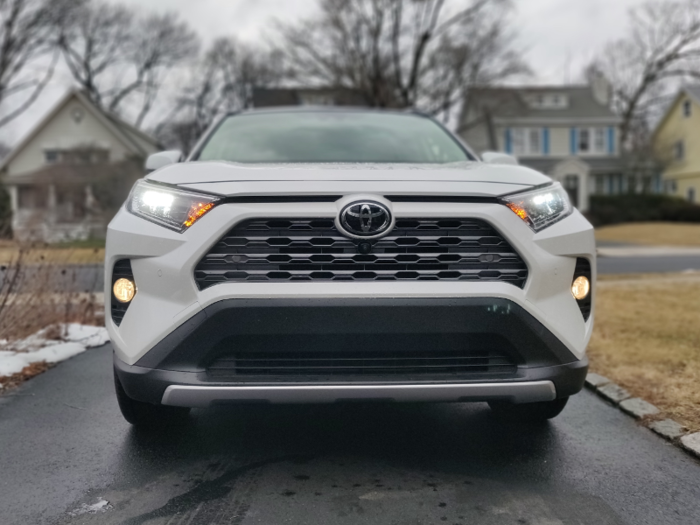
The RAV4's interior is also new, and we were impressed. Material quality was outstanding, and everything felt well put together.
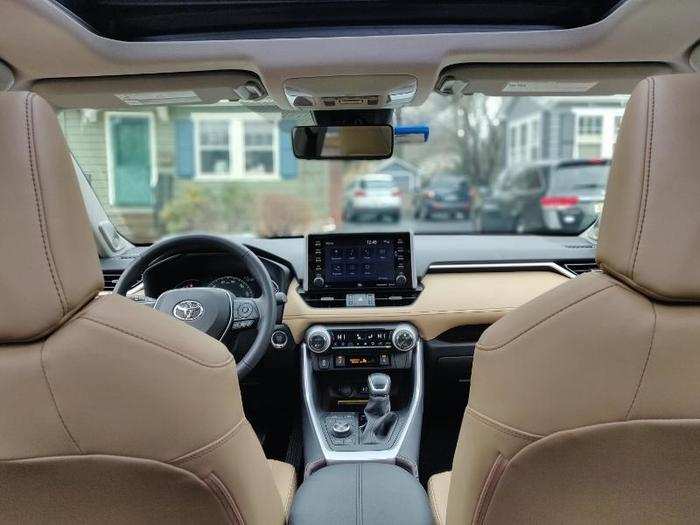
The leather-upholstered seats in our test car were soft and supportive, with ample adjustments available.
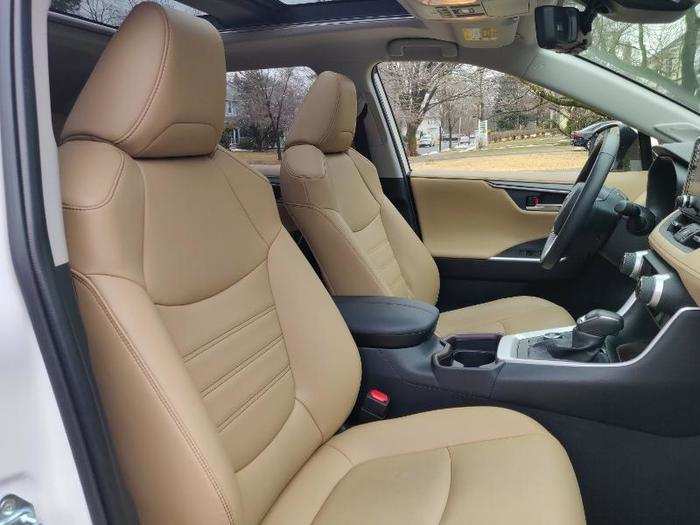
Toyota worked hard to make the RAV4's cabin easy to live with — and it shows. Cabin ergonomics are top-notch. Everything the driver needs is clearly marked and easily within reach.
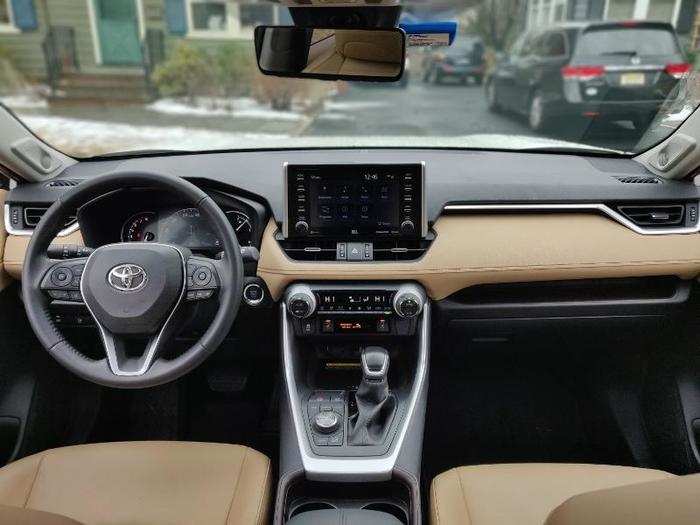
I'm a fan of the various storage nooks found throughout the RAV4, like this one right above the glove box.
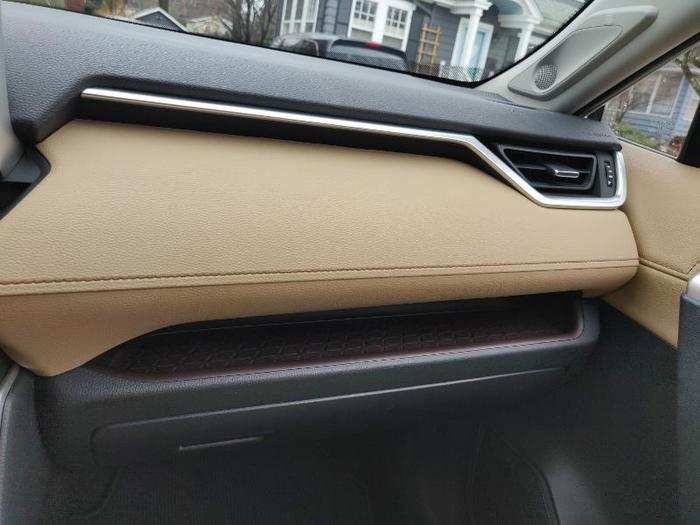
In front of the driver is a hybrid digital/analog instrument cluster. Our test car's 7-inch information display worked well and offered a bevy of driving data. Lower-trim cars come with a 4.2-inch display.
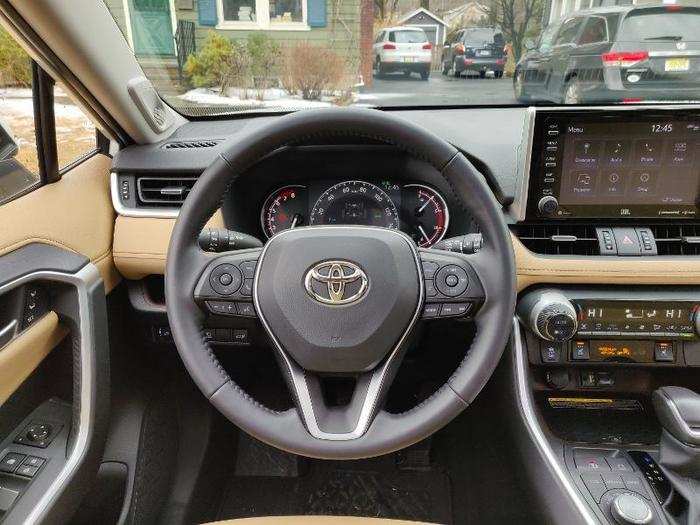
Atop the center stack is an 8-inch touchscreen running the latest version of Toyota's Entune infotainment system. Entune is not one of our favorite systems.
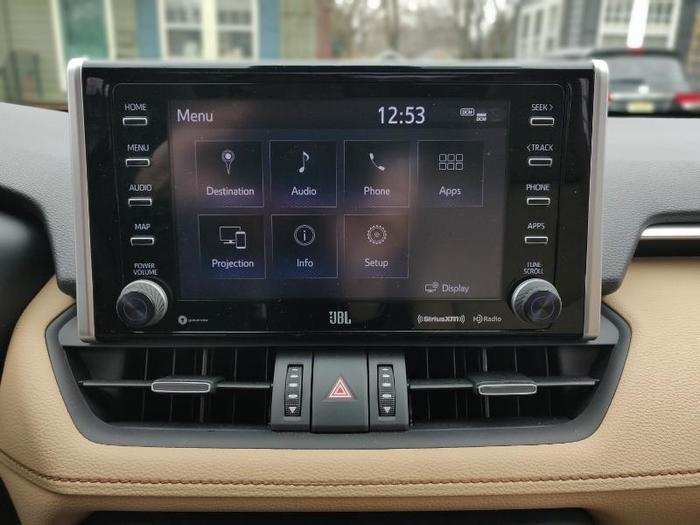
Even though Toyota has made improvements to the system, it's still clunky to use, and its presentation is decidedly outdated.
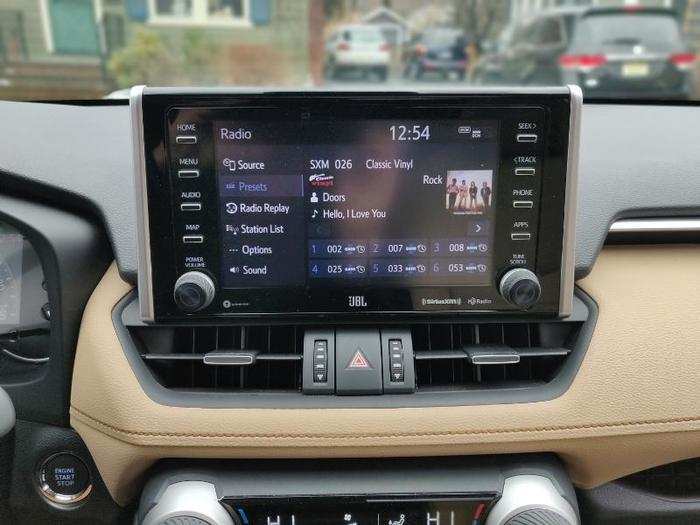
Entune is not without its merits: The system has plenty of features, such as app integration, WiFi connectivity, and built-in navigation.
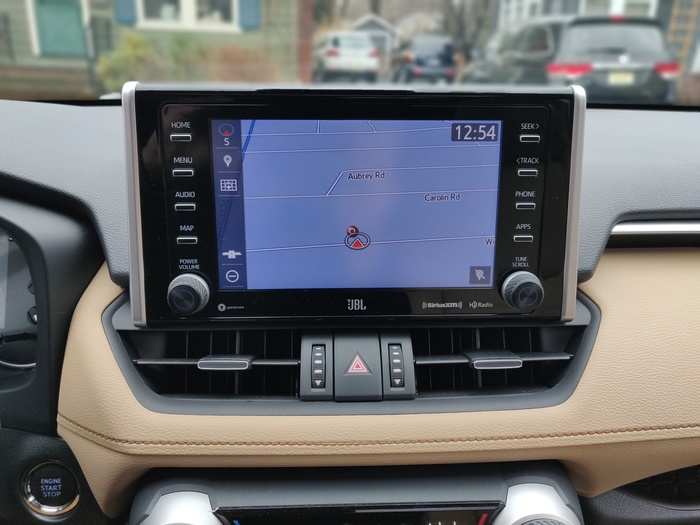
And the physical shortcut buttons around the bezels dramatically improve Entune's usability.
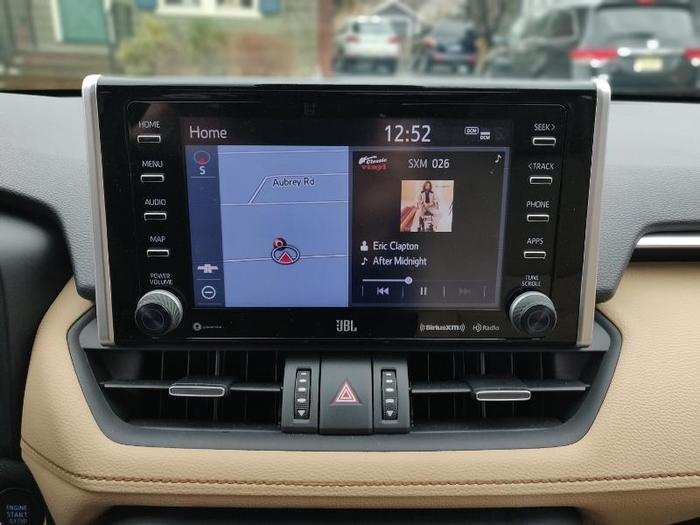
And then there's Apple CarPlay capability. It's available for the first time on the RAV4 and allows you to bypass Entune.
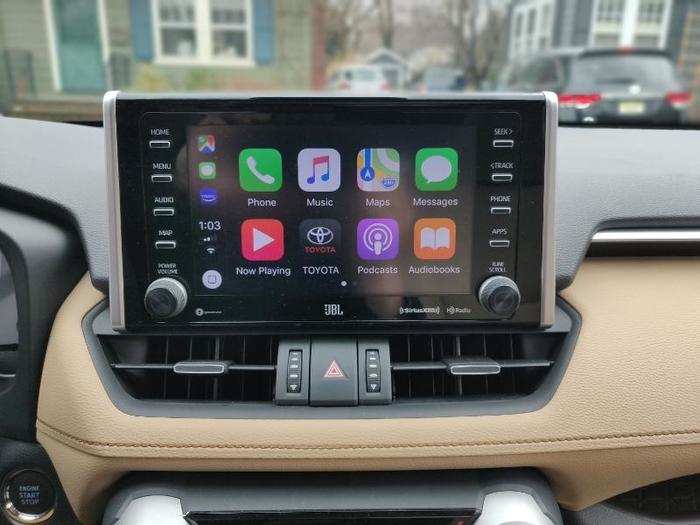
Lower on the center stack is the RAV4's climate controls and seat heaters — again, well designed and easy to use.
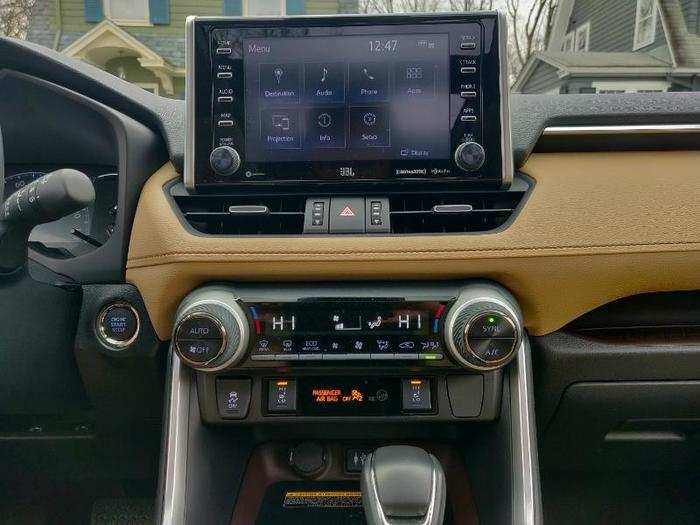
At the base of the center stack is a power socket, a USB plug, and a Qi wireless charging pad.
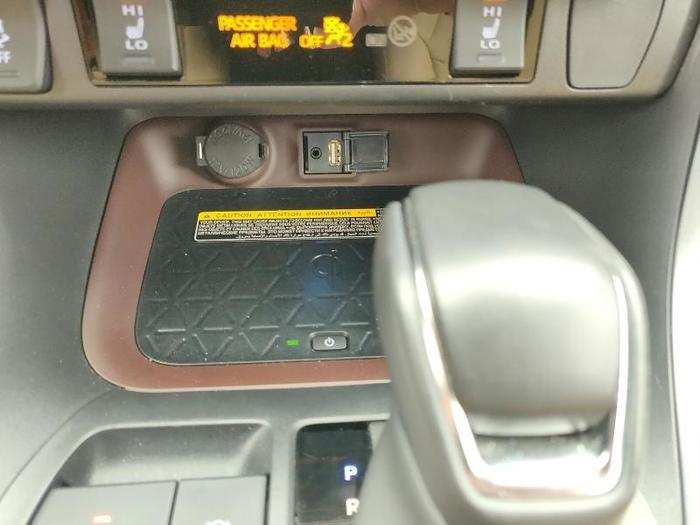
Our test car came with a screen embedded in the rearview mirror that can be turned on or off using a toggle switch at the bottom. The system took a while to get used to but worked like a charm. It'll be particularly useful when the RAV4 is packed with people or cargo and rear visibility is obstructed.

One of the RAV4's highlights is its advanced camera system. Not only does it have a rear view and an overhead view, it also offers a 360-degree panoramic view that will swing around to show the car's surroundings.
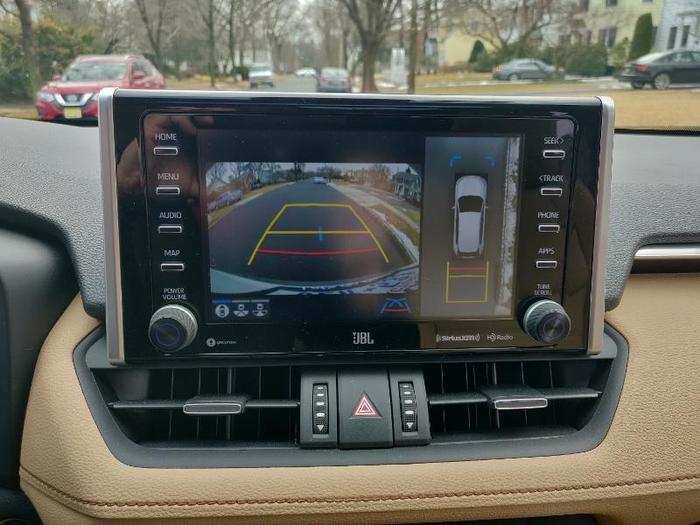
The system also has a feature that shows you what the car looks like from the perspective of those around it.
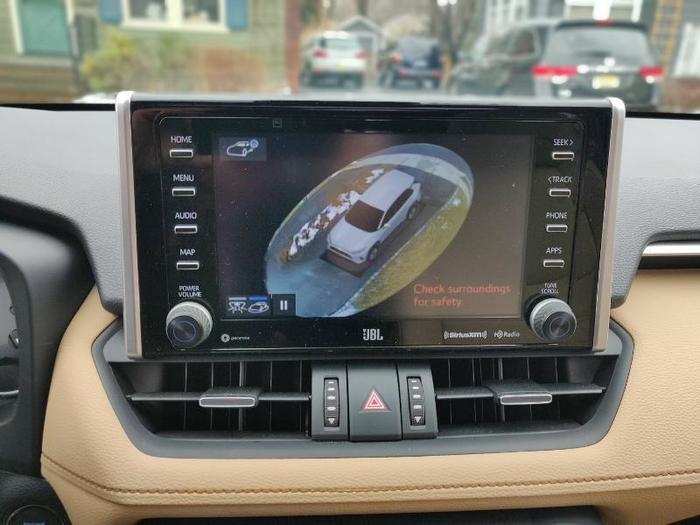
All RAV4s come standard with Toyota's Safety Sense suite of semi-autonomous driver-assistance technologies, including pre-collision warning with pedestrian detection, adaptive cruise control, lane-departure warning with steering assist, automatic high beams, lane-tracing assist, and traffic-sign assist.
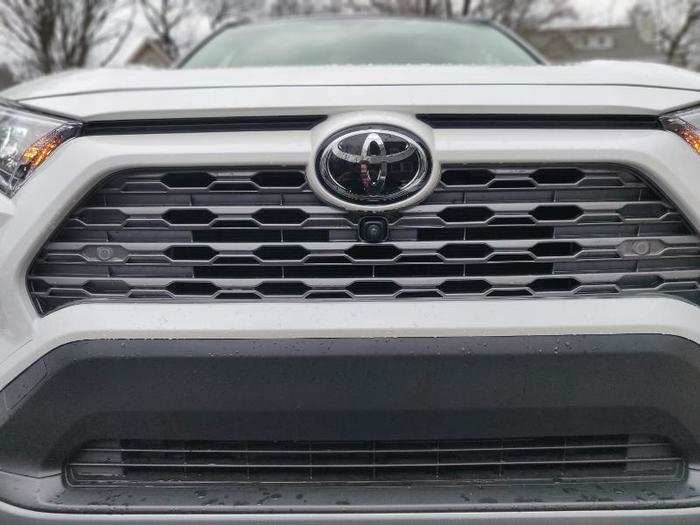
The RAV4's second row felt roomy and spacious. It offers 37.8 inches of legroom, up from 37.2 inches in the previous generation. However, it lags behind the Hyundai Tucson's 38.2 inches — not to mention the Subaru Forester and the Mazda CX-5, both of which offer more than 39 inches.
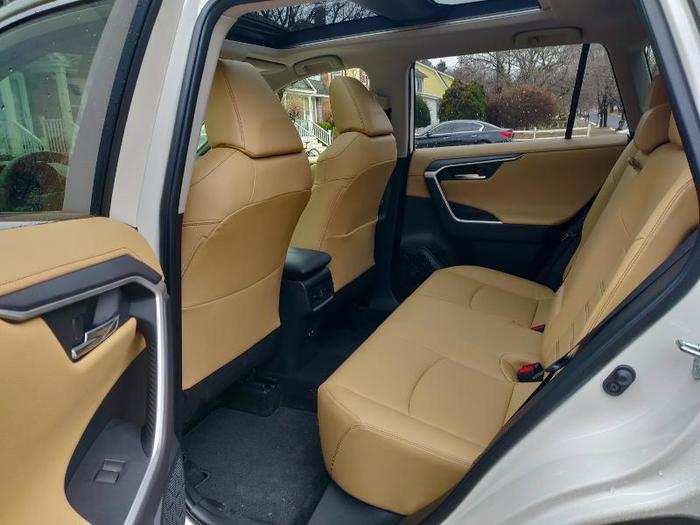
This massive panoramic glass roof is a nice extra. It gives the cabin an open, airy feeling.
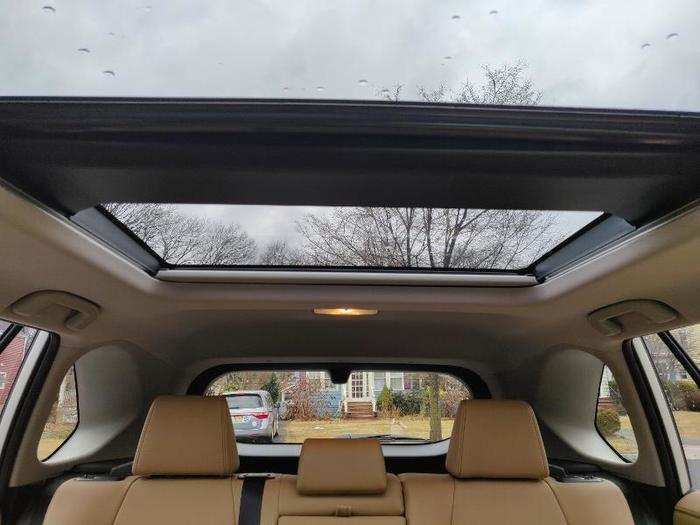
Open the power liftgate ...
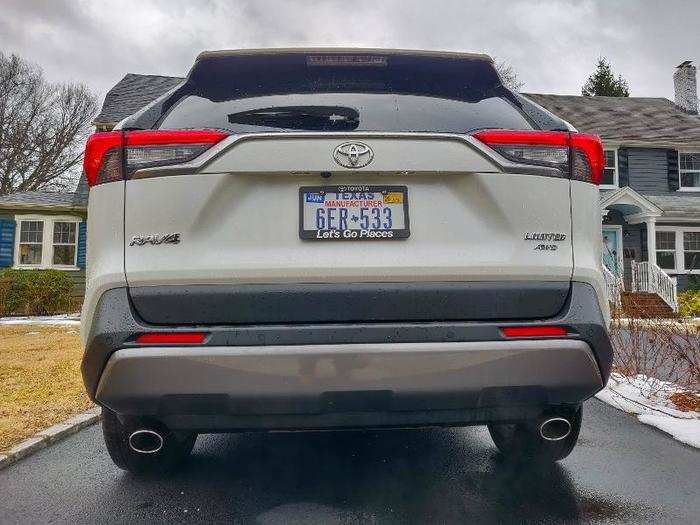
... and you'll find 37 cubic feet of cargo room. Fold down the second row, and cargo capacity increases to 69.8 cubic feet. Both figures are down from the 38.4 cubic feet and 73.4 cubic feet of the outgoing RAV4.
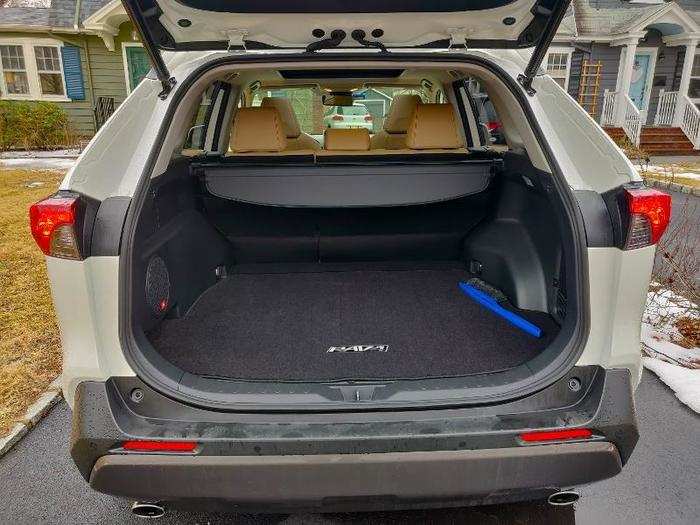
All non-hybrid RAV4s are powered by a 2.5-liter, 203-horsepower, naturally aspirated inline-four-cylinder engine shared with the Toyota Camry. It's mated to an eight-speed automatic transmission sending power to the front wheels or an optional all-wheel-drive system.
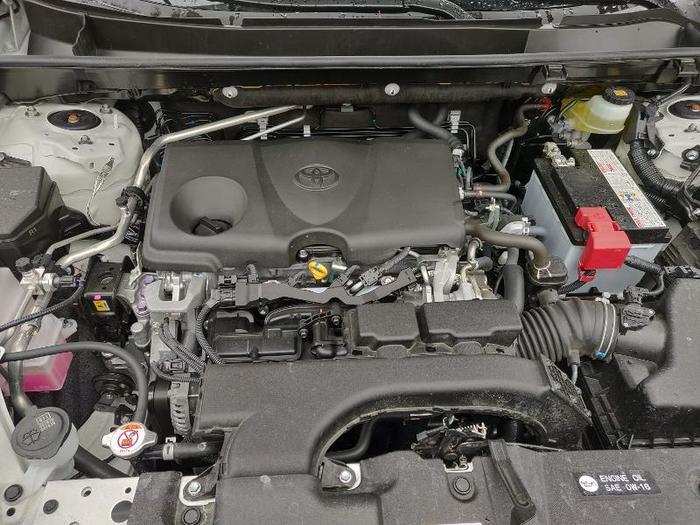
Hybrid RAV4s are powered by the same 2.5-liter four-cylinder engine paired with a hybrid drive system to produce 219 horsepower, sending power to all four wheels through a continuously variable transmission.
Our test car came with a fancy Dynamic Torque Vectoring all-wheel-drive system designed to send up to 50% of the engine's torque to the rear wheels. It can also distribute power between the left rear and right rear based on road conditions.
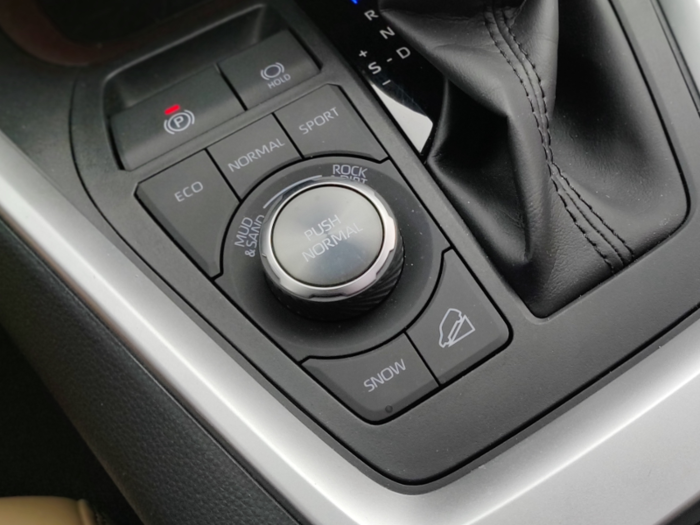
So what's it like to drive?

We found the Toyota RAV4 to be shockingly unrefined to drive.
The issues center around the RAV4's naturally aspirated four-engine.
"The 2.5-liter engine is one of the most coarse-sounding four-cylinder engines I've encountered in a long time," we said in our review. "Under hard acceleration, the engine buzzes and strains like a poorly executed 20-year-old tuner Honda Civic."
Unfortunately, the eight-speed automatic transmission paired to the engine doesn't make things better as shifts were slow and often came with an uncomfortable jolt.
The coarseness of the RAV4's powertrain came as a surprise to us considering the fact it's shared with the current generation four-cylinder Toyota Camry, a vehicle we enjoyed.
On the bright side, inline-four delivered strong acceleration.
Our verdict.
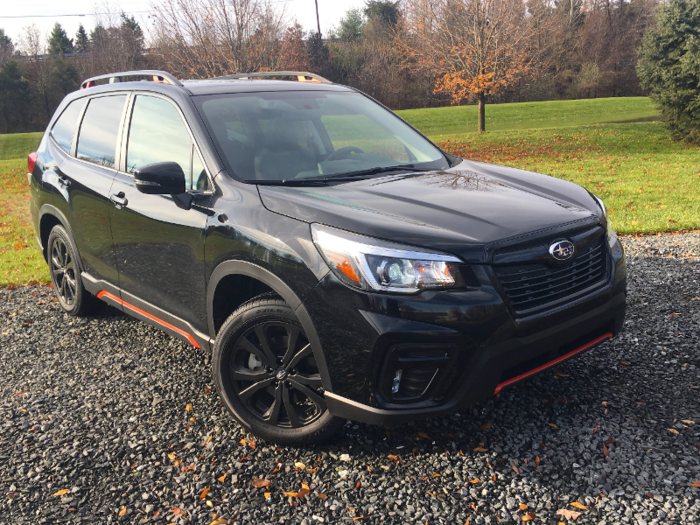
The Subaru Forester and the Toyota RAV4 are two of the most well designed and expertly executed compact crossover SUVs on the market.
Both offer thoughtfully designed interiors, strong build quality, and capable all-wheel-drive systems. Both models also offer a complete suite of standard semi-autonomous driver's assistance technologies.
However, the Subaru really impressed us with its Starlink infotainment system. It's intuitively designed, attractively rendered, and packed with feature content. The excellence of Starlink puts into sharp relief the lackluster performance of Toyota's Entune system. In fact, the best thing I can say about Entune is that with the Apple CarPlay integration, we no longer have to use it.
And then there's the RAV4's engine. On its own, the Toyota 2.5-liter four-cylinder is known for its smoothness and efficiency. But in the RAV4, it proved to be disappointingly loud and rough in a manner unbecoming of a Toyota.
Which brings us to the verdict — The Subaru wins.
Popular Right Now
Popular Keywords
Advertisement